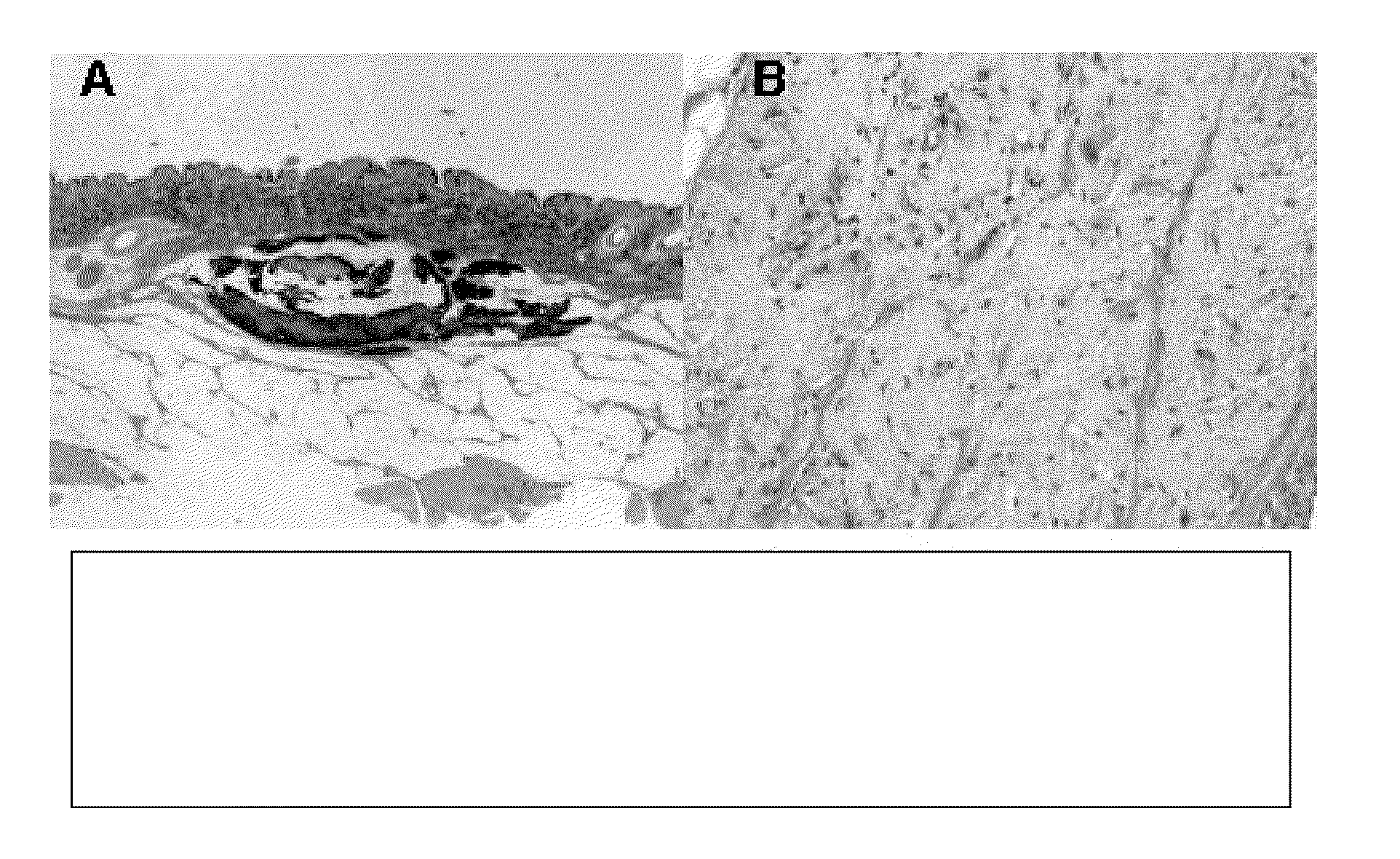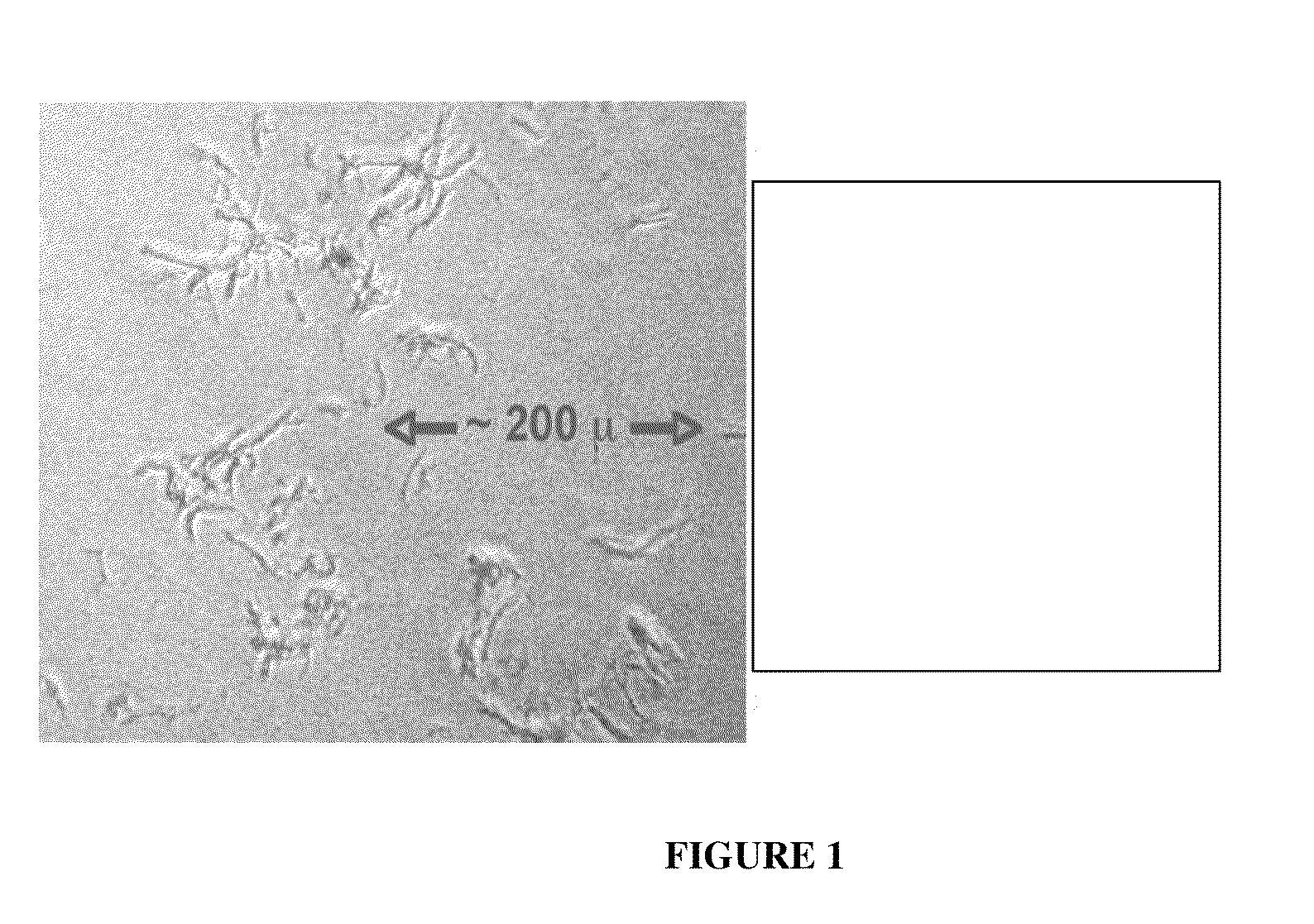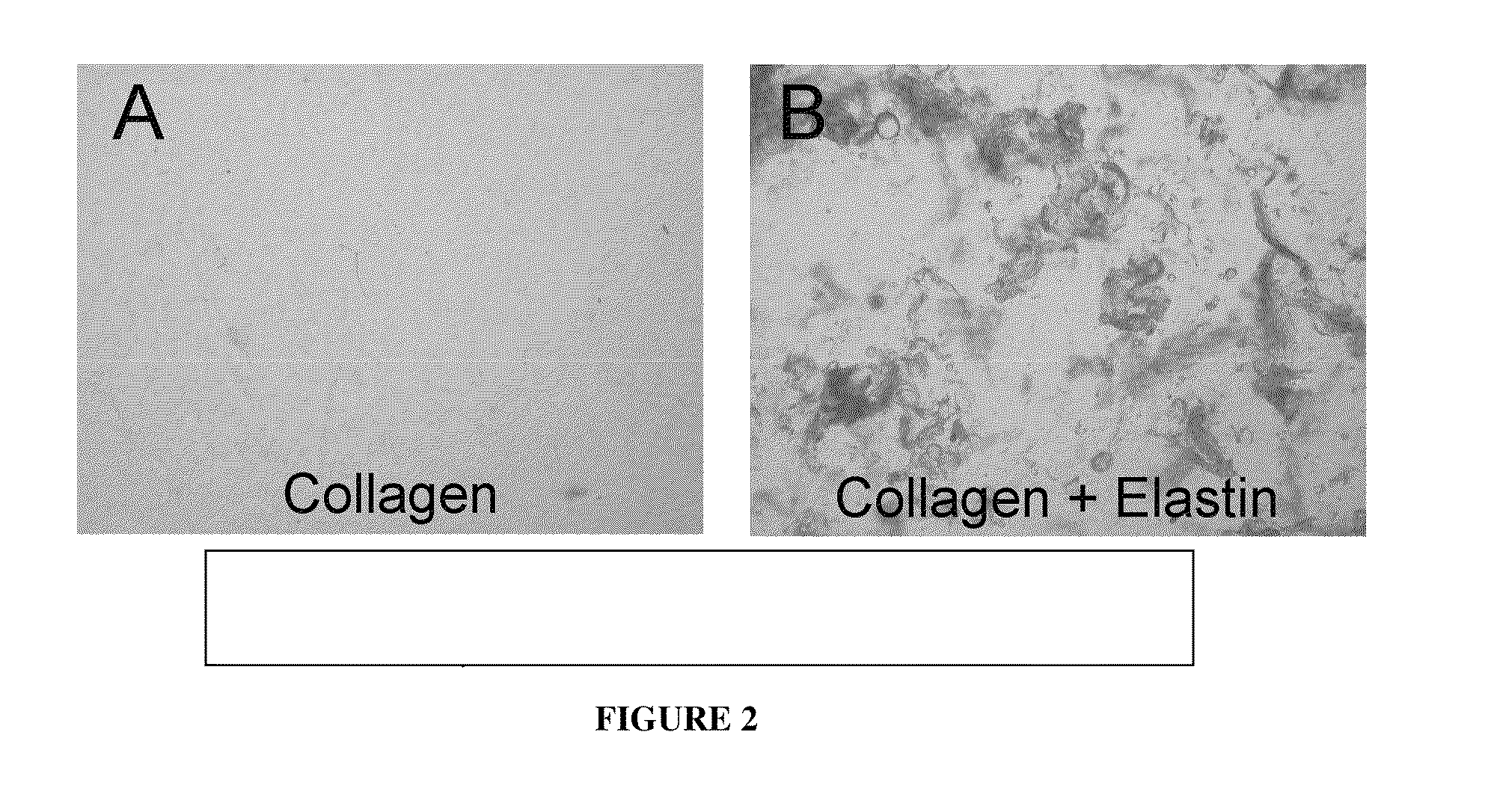Elastin for soft tissue augmentation
a technology of soft tissue and elastin, which is applied in the direction of depsipeptides, peptide/protein ingredients, unknown materials, etc., can solve the problems of skin thinness, wrinkles, weakness, viscosity, etc., and achieve the effect of increasing tissue volum
- Summary
- Abstract
- Description
- Claims
- Application Information
AI Technical Summary
Benefits of technology
Problems solved by technology
Method used
Image
Examples
example 1
[0096]Example 1 shows the isolation of elastin from native aorta. Elastin is also purified from aorta. The aorta can be obtained from any mammalian species, including but not limited to human, bovine, porcine, equine, or ovine. Alternatively, elastin can be isolated from other connective tissues that contain elastin, including skin, tendon, ligament, etc. Aorta is advantageous for isolation of elastin, since aorta is composed of approximately 30% elastin by dry weight. The process for isolating elastin involves a salt-based decellularization step, followed by boiling in 0.1 N NaOH and then extraction in hydrophobic solvents. Elastin isolation according to this example has unexpected properties when implanted in vivo, as shown in Example 2 (below). Steps for purifying elastin from aorta according to the present invention are as follows:[0097]1. Obtain wet weight of aorta. Aorta is preferably fresh or non-frozen.[0098]2. Shred aorta using a blender or some other device in distilled wa...
example 2
[0112]Example 2 shows that purified elastin in vivo resists host cell infiltration. Implantation of substances into the subcutaneous space can elicit adverse host responses, including inflammation, recruitment of fibroblasts and fibrous encapsulation, recruitment of leukocytes and foreign body giant cells, calcification, scarring, and immune response with generation of antibodies or activated T-cell responses. Adverse host responses tend to be more severe for xenogeneic proteins that for allogeneic or for autologous proteins. To directly test the adverse host response to xenogeneic elastin, as compared to xenogeneic collagen, we implanted purified preparations of both human collagen and elastin into porcine subcutaneous tissue. The human elastin was isolated from aorta according to the present invention using salt-based decellularization followed by NaOH extraction as described in Example 1. After 4 months, xenogeneic human collagen (which is xenogeneic to porcine recipients) showed...
example 3
[0113]Example 3 shows that purified elastin can be delivered in different carriers. To demonstrate that elastin that is prepared in accordance with the present invention could be injected subcutaneously using different carriers, we injected human elastin that was suspended into either human collagen or into crosslinked hyaluronic acid (Restylane) into porcine recipients. As shown in FIG. 4, the elastin (which stains black) persists well subcutaneously for at least 4 months when suspended in either human collagen or in hyaluronic acid. In these images, subcutaneous fat stains white, dermis stains brown, and elastin stains black. It is notable that FIG. 4 shows that human collagen carrier is largely absent at 4 months while human elastin persists, showing the superior persistence of elastin in this model. In addition, elastin is well dispersed in Restylane carrier, and shows superior persistence to Restylane in quantitative porcine implantation studies. Hence, elastin that is prepared...
PUM
| Property | Measurement | Unit |
|---|---|---|
| molecular weight | aaaaa | aaaaa |
| length | aaaaa | aaaaa |
| MW | aaaaa | aaaaa |
Abstract
Description
Claims
Application Information
 Login to View More
Login to View More - R&D
- Intellectual Property
- Life Sciences
- Materials
- Tech Scout
- Unparalleled Data Quality
- Higher Quality Content
- 60% Fewer Hallucinations
Browse by: Latest US Patents, China's latest patents, Technical Efficacy Thesaurus, Application Domain, Technology Topic, Popular Technical Reports.
© 2025 PatSnap. All rights reserved.Legal|Privacy policy|Modern Slavery Act Transparency Statement|Sitemap|About US| Contact US: help@patsnap.com



